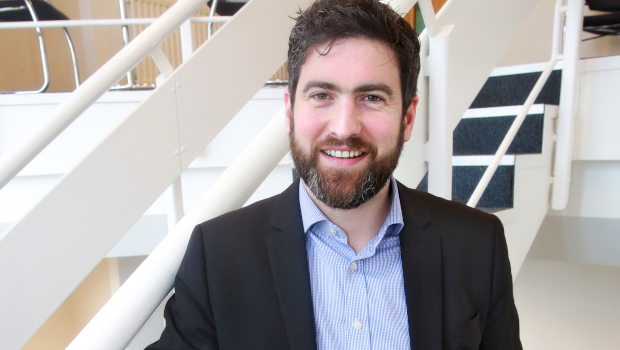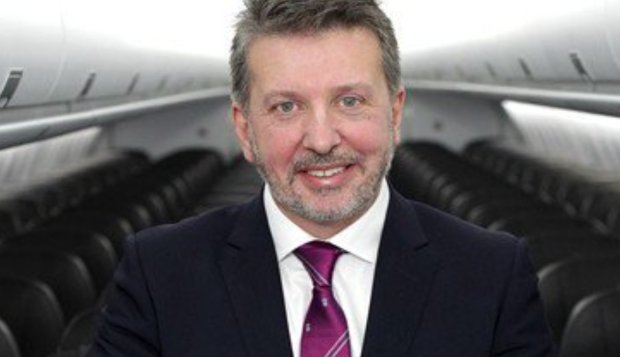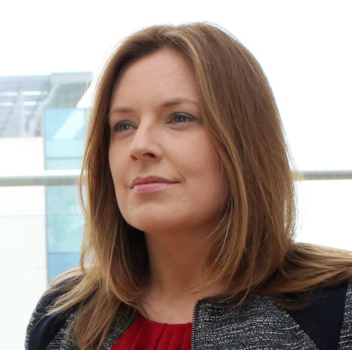
Unifying strategies in enterprise IT
For quite some time now, the IT function has been deeply embedded in the business. For much of this period, it has been a loyal and faithful servant, dedicated to meeting the needs of and supporting the activities of the business but in 2019, something interesting is happening which could upend this relationship.
A growing number of C-suite executives are realising that technology can be a lot more than a simple servant. It can inform the very nature of how the business operates. As a result, analysts have started arguing that the lines between business and technology in the enterprise are blurring.
Technology is becoming the catalyst for business strategy and transformation and the expectations on IT are shifting. As a result, many organisations are reimagining the role of technology and rethinking traditional models. This is something that John Murphy, head of commercial strategy for Arkphire, is increasingly seeing in the Irish market.

“We are 100% seeing a new paradigm in the IT world, where technology is taking more of a leading role. Whereas we used to see technology being upgraded for its own sake, usually on a three to five year refresh cycle, we’re now seeing it underpin the business requirements of the enterprise more and more,” he said.
“It’s being used to deliver on business strategies in a much more key way, whereas before its role would have been confined to control and support of business objectives, and delivering uptime – that sort of thing. Those functions are still important, but it’s also being used for much more core activities, supporting the business and also doing things like enabling and attracting staff.”
Fundamental shift
According to Murphy, this change represents a fundamental shift in how IT is structured, and it has a variety of causes.
“If you go back a decade or so, the average person’s experience of technology in work would have far outweighed their personal experience. But that’s no longer the case. The introduction of the Apple ecosystem and the app revolution that came with it showed that there was another way to deliver tools and experiences without the need for monolithic centralised IT,” he said.
“According to Gartner, around 30% of the workloads out there reside outside of the data centre, whether that’s via SaaS or PaaS or whatever, but that’s projected to be north of 60% in the next three years. The traditional IT function of managing a data centre and allowing others to connect into that data centre to access applications there has drastically changed.”
As others have noted, the arrival of the software-as-a-service model has opened up and democratised access to software. Instead of having to go through the IT department, increasingly non-technical staff in the marketing department and elsewhere can simply buy access to the software they need online with a company credit card.
“Overall, the IT function now looks more like an end user digital experience provider, using device choice programmes to enable staff to work after hours wherever they want to, or to attract the next generation of people who are looking for digital workplaces,” said Murphy.
“The IT function is being asked to facilitate business process redesign using modern Surface Pros or iPads and app-based methods of consuming business processes, rather than a traditional application client server relationship. The lines are blurring and the business has much more choice about where it can go to source applications and the dev ops community are much more vocal than ever before.”
Relationship change
Martin Carry, head of an enterprise business unit for Evros, agrees that there is an interesting shift taking place in the relationship between technology and the business.
“Absolutely, technology is transforming all businesses and is becoming much more important. The reality is that there is technology that enables your business and technology that differentiates your business. The systems that you need to run in your back end – your HR system for example – aren’t really going to give you a competitive advantage,” he said.

“It’s the other systems, the front end systems that interface with your business, where you plug the logic of your business into technology, that allow you to differentiate yourself. And the truth is that there are increasing opportunities for companies to differentiate their businesses by leveraging their technology and that’s a developing trend.”
This has been born out over the last 18 months as there has been a trend in the Irish marketplace towards digital transformation in general.
“True digital transformation asks the question how do we use our technology to allow us to rethink how we organise our business and gain a competitive advantage. So to the big question – are companies reorganising themselves to prioritise IT? Yes, they are, but it’s early days and that’s really more of a destination. Most companies are on a journey and have yet to arrive at that destination,” said Carry.
Proof of this development can be seen, according to Evros, in the changing nature of the people taking part in consultant strategy meetings. Two years ago, Carry and his colleagues would have routinely met with IT specialists in client companies – today, those meetings include c-suite business leaders as well.
“Where we used to map out technology in terms of what we could offer, now those meetings are structured quite differently and are based around what the business needs are, front to back, and how can IT support and push those forward, eliminating friction points,” he said.
A further point is that this kind of reinvention is happening across the board. It was common in the past for companies to be worried about newly emerging ‘digital natives’, start-up rivals who could appear out of nowhere and steal market share based on their lack of legacy baggage.
“That’s no longer such a huge concern. It’s not the new kids on the block you have to worry about, you have an equal challenge from reinvented incumbents, companies that have been your competitors for years and years but which have recently reinvented themselves by adopting digital,” said Carry.
Not clean cut
One person who is at the coalface of these developments is David Cadenhead, chief information officer with CityJet. Cadenhead has held this position since 2015 but has had a long career in the aviation industry and is well placed to comment on these developments.
“It is a trend which is in full steam but it’s not as clean cut in my experience as people are making out. In practice, when push comes to shove, it’s often the traditional impediments to getting things done that cause problems rather than technological ones,” he said.

“Winning the hearts and minds of people around technology initiatives is really important. That is often a bigger challenge than overcoming technological impediments. The whole technology-first thing is a trend but it’s not industry wide just yet.”
From speaking to others in roughly similar roles to his own, Cadenhead feels that many business people can see that IT can and should play a much more significant role – but it’s not there yet.
“People beyond the IT arena in lots of different organisations recognise that, but changing the culture of an organisation to actually realise that opportunity, that’s often the bigger challenge. It’s about human nature at the end of the day and people are often slightly wary of change, no matter what that change may be,” he said.
CityJet has fully embraced the area of collaborative working as part of its digital transformation. The organisation uses Microsoft Teams to keep its geographically diverse employees feeling like part of a single organisation.
“Part of this has been driven by IT and part by the necessity of the business. Airlines are very spread out – roughly 80% of our staff are not office based, they’re pilots and cabin crew based all over Europe. Roughly 20% are office based, either here in headquarters or in base locations,” he said.
“The challenge of building a sense of collaboration around that is enormous and this is one area that technology has significantly re-imagined the way we’re organised. We try to provide the tools, platforms and digital environment that allows our staff to work together and that means not just providing the tools but giving coaching to key users about how they can benefit in their work practices.”
That requires a change in work practices, led by technology. Cadenhead and his staff have to be coaches, promoters and effectively a kind of marketing department to evangelise these tools and get everyone using them.
Elsewhere in the industry, there are those that caution against adopting a technology-first methodology too lightly.
The IT answer
“There’s a cliché – if you all you have is a hammer then all your problems start to look like nails. If all you have is an IT system, then sometimes organisations start looking for ways in which that IT system can solve their problems rather than stepping back and asking if IT is really the answer?” said Yvonne Byrne, partner with consulting company Deloitte.

“The other side to that is the impact that emerging trends have. Lots of people in the business are hearing about the impact of emerging technologies like cloud, open APIs in the financial sector, artificial intelligence and so on. When these new technology models come to the fore, many businesses start thinking that maybe they need to embrace them in the pursuit of a competitive advantage.” The problem with this is that it can result in putting the cart before the horse, in adopting technologies before fully thinking through how they are going to add value to the business, just because they are there.
“A lot of our clients, rightly or wrongly, when they think about transformation and adding value to their business, they think about their strategic objectives in terms of what they want to achieve. And a lot of them go directly to technology solutions for the answers,” said Byrne.
“They then have to back track and ask what does this mean for the business and what does it mean for the end customer – does this technology actually deliver on our commercial outcomes?”
That is a trend that Deloitte has seen in effect in the Irish marketplace, with Byrne saying that much of the time, it is her job, and that of her staff, to encourage such companies to ‘pivot their mindset’.
“We have to get them to think about technology as an important enabler but that they also have to be really clear about how they’re going to apply it. That requires some more strategic thought in advance of selecting a technology provider. You come across companies that have spent a lot of time and money implementing platform solutions and they don’t necessarily get all the value off the back of it that they should.”
White paper
Earlier this year, Deloitte published a white paper outlining some of its ideas about how these changes will impact the market. In particular, it outlined five technology-driven forces that are adding to the already complex range of decisions facing senior business leaders.
The first is convergence. The fusion of physical and digital worlds has blurred industry boundaries, tangled value chains, and disrupted traditional value creation models. The second is data proliferation and the fact that applying intelligence to big data can inform decisions that allow businesses to adapt and remain ahead of disruption.
The third is competing horizons. C-suite leaders often must simultaneously manage today’s business while building the company of the future. Strategic choices made today have long-lasting implications and should be made in the context of a broader and fast-moving ecosystem.





Subscribers 0
Fans 0
Followers 0
Followers